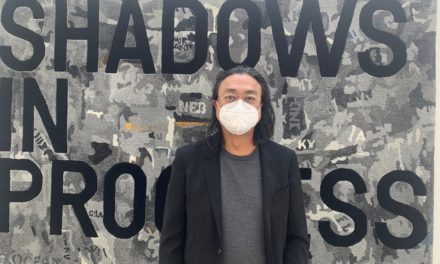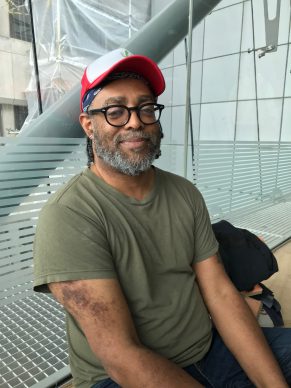Jehan Chu
Jehan Chu, founder of a crypto-investments company in Hong Kong called Kenetic Capital, worked at Sotheby’s in a former life before becoming a freelance art advisor and then dedicating himself entirely to the crypto-universe. Nowadays he lives between Hong Kong and Puerto Rico and has set himself up as a collector of blue-chip art NFTs (Refik Anadol, Beeple…) and an investor in NFT platforms. He says he has invested in 250 blockchain companies and 25 that are dedicated to NFTs. Furthermore, he advises Christie’s on the subject of crypto as well as artists like Refik Anadol, Beeple and various institutions.
What is the current state of the market for NFTs in art?
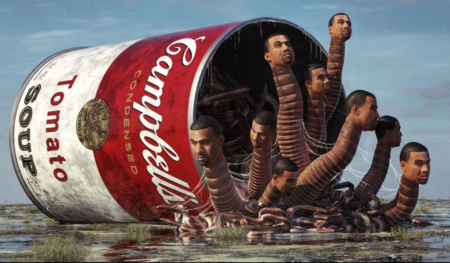
Beeple
The market for NFTs is following the same trajectory as the crypto market. It started with the crash of Terra Luna (ed. a South Korean blockchain project that brought about the creation of stablecoins) then TFC (ed. an NFT platform that specializes in the world of football) and finally FTX (ed. a centralized marketplace for cryptocurrencies whose bankruptcy had a huge impact last November). The market for art NFTs is primarily sustained by crypto-investors. The value of collected artworks is often defined in crypto-currency and particularly in ether (the cryptocurrency linked to the Ethereum blockchain). Naturally all these events have markedly influenced the fall in prices of art NFTs but also the volume of sales.
Beeple
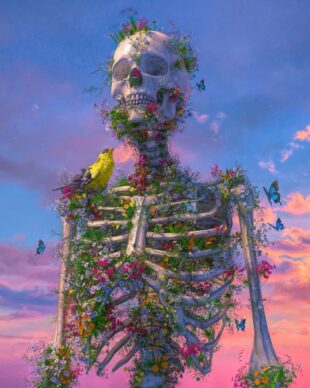
Beeple
By way of example, we saw the price of works by Beeple (ed. the artist who set an auction record in 2021 at Christie’s with 69.3 million dollars. See his interview here) has fallen by 100 or 200,000 dollars to 20,000 or 30,000 dollars for the less expensive works on Opensea (ed. a digital marketplace for NFTs).
Refik Anadol
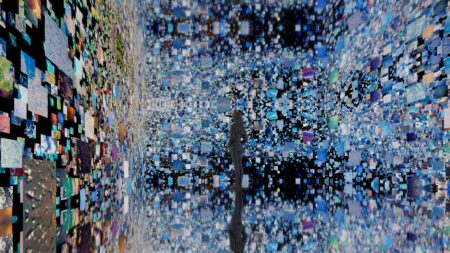
Refik Anadol
We can say that each artist has a corresponding market. There are also different editions and certain series that are more popular than others. So Refik Anadol (born in 1985), an artist who uses virtual reality (see his interview here) is the subject of an exhibition currently on at Moma (1). It is the first major exhibition in a traditional museum for someone considered to be a fully NFT artist and his work continues to have a string presence. He hasn’t been affected as much as others. Refik has different types of works. When Moma announced his exhibition there was a surge of interest in his work. Refik releases his works in significant numbers. We have seen his prices go from 3 to 4 ethers to 1 to 2 ethers. This corresponds to a drop of 60% compared to a drop of 70 or 80% for others…
Haven’t the drops in value in the world of blockchain discredited NFTs? What can we imagine might come next?
As always in art, it is important to understand the creative context of the artist which allows us to determine their relevance. The best proof that NFT art is not a short-lived phenomenon is that it is the subject of a series of institutional exhibitions. (See here the report about the first NFT shows in museums last year). Along with Moma in New York, we can cite the Kunsthalle in Zurich, for example, which is currently staging an exhibition on NFTs (2).
Isn’t there a lack of expertise in the field of NFTs in art?
Absolutely. It’s now up to the exhibition curators to put in the work. Today, reputable institutions such as the contemporary art museum M+ in Hong Kong are displaying NFT art, with “Human One” which is the large-format work by Beeple (3). Before that the piece was exhibited at the Turin museum, Castello di Rivoli (See here the interview of Ryan Zurer, the buyer of Human one). Today renowned collectors such as Uli Sigg (the Swiss collector and former ambassador who donated his collection of Chinese art to the M+ museum. See the report about Uli Sigg here) and well-known established dealers such as Gagosian, Acquavella and Pace are active in the field of NFTs. Contemporary art institutions are showcasing, collecting and selling NFT art. And the NFT is a medium that has yet to reveal its full potential.
But isn’t the recent fall in prices a bad sign for this field?
In terms of art NFTs the prices are fluctuating, like in art in general. This is a trend that we also observe for certain old masters and for contemporary artists. What I am holding on to today is the new and reassuring phenomenon of the interest on the part of the institutions.
Established artists such as the Swiss Urs Fischer who lives in Los Angeles are also interested in the creation of NFTs…
I really like Urs Fischer’s work in the field of NFTs, and I collect him. (See here an interview of Urs Fischer)
Incidentally the prices have dropped sharply. Each NFT is produced as a unique piece and at the moment when they were launched, over a year ago, could be worth 120,000 dollars each. The average price today is between 20,000 and 30,000 dollars. But we can’t generalize. The prices vary according to the artworks.
Ian Cheng
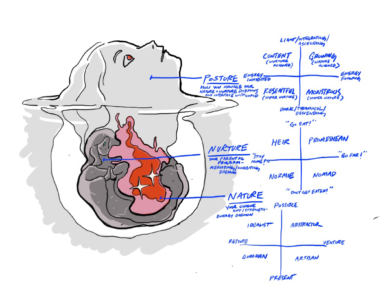
Other artists such as Roe Ethridge, Ian Cheng and Katharina Grosse are also exploring this medium today. (4)
Frank Stella
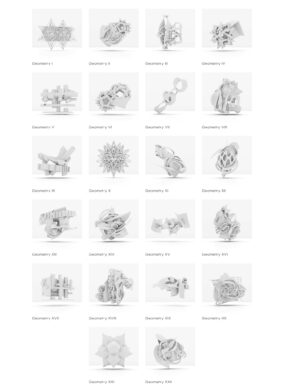
Frank Stella
Frank Stella released an exceptional NFT (5). Using 20 sculptures that hadn’t been made he produced 20 NFTs in sets of 100 copies. The owner has the right to download the digital file and 3D-print the physical piece in the colour and material that they wish. These NFTs were released for 1000 dollars each. According to the rumours, the Whitney Museum in New York and the National Gallery in Washington have acquired the entire series.
What advice would you give to people who are looking to buy art NFTs today?
Like in art in general there are exceptional opportunities at the beginning of a movement in terms of access to works, which embody the era. Our current period is crucial in that it has produced a completely “digital native” culture. The NFT will be the paintbrush and canvas for future generations of artists. NFTs have also created a complete generation of new art lovers who collect digitally native artists. Progressively they will become interested in physical art and physical and digital art will fuse. This is the perfect moment to build a collection on an international scale. Because prices are low and access to the works is open.
What are the dangers of a collection like this?
They are the same as in any other category of art. The first is most likely speculation. I think that hacking is also a problem. It’s easier to take and transport works from a folder on a computer than to steal them from a real-life house.
This interview has been reworked in its written form for ease of reading.
(1)https://www.moma.org/calendar/exhibitions/5535
(2) Dyor, Until 15 January 2023.Kunsthalle; Zurich. The first institutional art exhibition within the context of blockchain and NFTs in Switzerland.
https://www.kunsthallezurich.ch/en/kalender/7643-tour-of-the-exhibition-nbsp-dyor
(3) https://www.mplus.org.hk/en/exhibitions/human-one-beeple/
(4) https://outland.art/ian-cheng/
Support independent news on art.
Your contribution : Make a monthly commitment to support JB Reports or a one off contribution as and when you feel like it. Choose the option that suits you best.
Need to cancel a recurring donation? Please go here.
The donation is considered to be a subscription for a fee set by the donor and for a duration also set by the donor.

